Enagh Farrell
Illustrator
A Dublin-based illustrator exploring the quiet power of plants, stars, and stories – reframing how we see nature, one nettle, sign, or skyward glance at a time.
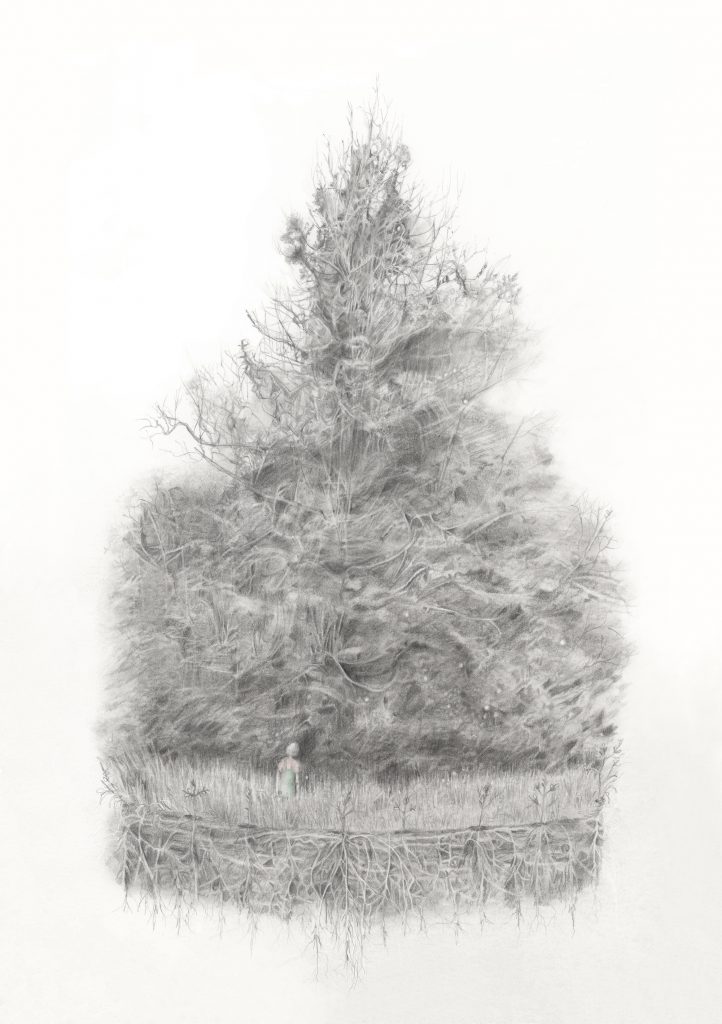
“At the moment, I’m trying to finish a project that I’ve been working on with a local group,” says illustrator Enagh Farrell, who is based in Inchicore, Dublin. “It’s the D8 Green Bridge Forum, and we have been working on local signage.”
The work is field-based and intuitive. “It meant that I had to do a lot of walking in my local area and identifying the plants correctly takes time” She draws each plant individually before assembling them digitally, creating what she describes as a subtle narrative – guiding walkers through overlooked relationships in the local ecosystem.
“I’m interested in how we can reestablish our connection with plants that are maybe not so loved all the time, because they’re really beautiful as well… they’re such gorgeous plants.”
Weeds and Wildlands
That philosophy carries through to her workshops, where even a stinging nettle becomes a conversation. “I did nettles once and I think people thought it was funny that we were sitting down to draw nettles… and then by the end of the class they were so enthusiastic, ‘it’s actually a really gorgeous plant’.”
“They’re so generous in so many ways, and particularly with the insects that depend on them… what I want to do in the workshops is try to help reframe our relationship to plants, and then as a whole, maybe nature.”
Farrell describes her approach as one of reframing – how we teach children and adults alike to see overlooked species not as weeds but as foundational players in our ecosystems. “If we all spent more time in nature, even just the nature outside our door, I wonder if we might not have such a problem with biodiversity or climate.”
Signage and Storytelling
In Inchicore, where Farrell lives, both the Camac River and Grand Canal converge. It’s a uniquely rich environment for biodiversity – “It’s normal to see dragonflies around here and damselflies and herons and cormorants.” Through her illustration, she hopes to build an informal trail. “If you came to Inchicore and you’d never been here before… it might make you look at some of the overlooked plants or the birds or the insects.”
The signs are intended to last: printed on steel to weather a decade or more. The durability is important – especially in outdoor spaces where weather and time can quickly wear down more fragile materials.
Farrell often uses reclaimed wood in her projects – materials that carried their own subtle history. One particular piece sparked her imagination. “I actually found it just behind my house,” she explains. With apartments nearby, she wondered about the wood’s past life: “I’d say someone pulled it out of their apartment.”
“It felt like it had already taken its own journey,” she says of the wood. “It had already had its own life and its own experience of living beside the Camac.” That layered sense of time – of material as witness – adds another thread to her practice, reminding her that even found objects carry stories long before they reach her hands.
One recent source of material came from a carpenter friend, who gave Farrell offcuts from locally sourced native woods. “They’ve all actually originated in Ireland, so it’s kind of nice,” she says. “And some of them are really beautiful, but I think because they’re so beautiful, I’m struggling to work on them.” For Farrell, even a scrap of timber is treated with reverence – its beauty not just in appearance, but in origin and story.
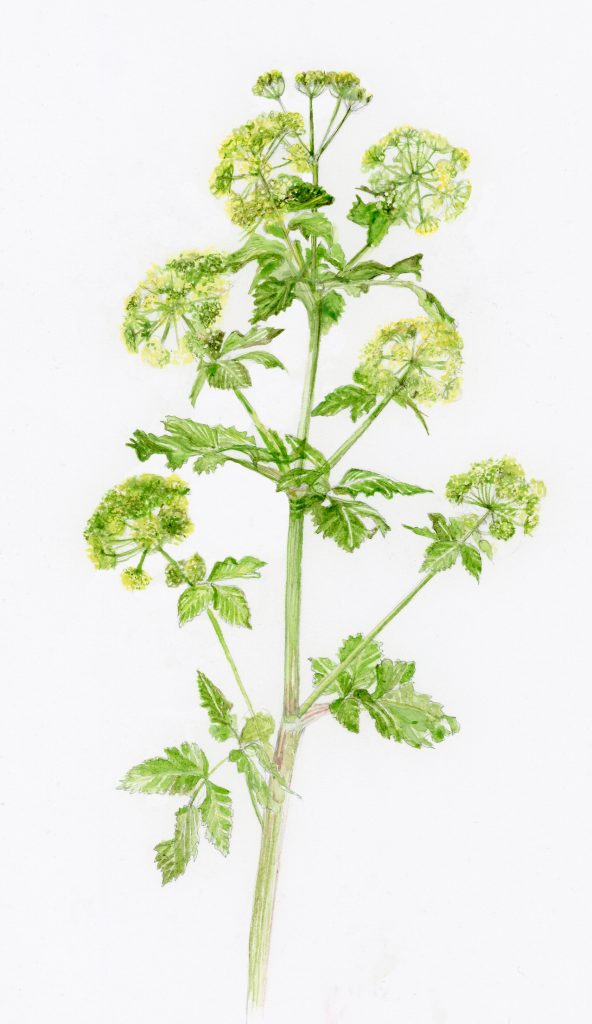
Materials with Memory
Farrell’s commitment to ecological responsibility is woven through every part of her practice. “It’s hard though, living in the world we live in, to always be ethical,” she says, “but I do struggle with it a lot, worrying I’m not making the right choices.” From greeting cards to packaging, she’s constantly weighing environmental impact against accessibility. “The idea originally behind it was that everybody can have an image, a piece of artwork, and I love seeing them framed in peoples homes… but I struggle then with making products, taking into consideration the inks that are used, and the trees that are affected.”
Her response is practical and evolving. She uses recycled paper and minimal packaging – often reusing materials sent to her. “I have a whole box of packaging bits. I save it all up and I will use that in things that I post out to people.” While many creative business courses encourage elaborate packaging, she resists that trend. “No matter how beautiful it is, I just get really irritated if there’s loads of wasteful packaging.”
A Book for Midwinter
Some of Farrell’s most recent work is as an illustrator in an upcoming book with writer Michael Harding, published by Hachette Ireland. “Michael’s writing is just gorgeous… I felt really, really lucky to be part of that that project.” The collaboration brought her into contact with Joanna and Ciara from Hachette Ireland. “They gave really great art direction. And they were really supportive the whole way through.”
The book, Midwinter: A Journey through a Season, is contemplative and rooted in close observation. “He’s very contemplative about his surroundings and really focusing in on small details within nature… and I think there’s something really gorgeous about winter, because there’s just a quietness… you really feel the quietness of winter through the book.”
Though she was illustrating it in spring and summer, she found it easy to slip into its atmosphere. “I’ve done lots of winter projects… the first packet of cards that I did, the winter trees, they were done in pencil.”
That first series came out of a desire to gently support people who might be experiencing seasonal depression. “I just kept thinking, maybe if everybody just went out and spent time walking in winter and looked at the trees… and the stars are easier to see in winter.” The quiet clarity of the season – bare trees, cold light, visible stars – became not just subject matter, but a form of encouragement.

Skyward and Grounded
Farrell’s fascination with stars is long-standing. “I actually think about the sky a lot… I remember when I was in college and a good friend of mine, she said to me something that stuck with me, ‘I just can’t believe the sky is real’.”
The sky, for her, is a site of connection. “It’s always moving and it’s never the same. And then at night… we’ve got this access to all these other stars.”
One night in Beara Peninsula, after leaving her tent for the toilet at 3 a.m., she found herself transfixed by the stars. “I was feeling sorry for myself. I was all cozy in my sleeping bag, and I got out of the tent frustrated, and looked up, and it was just the most incredible sky. And I just stayed out looking up for ages, I felt so glad that my bladder had woke me up to go and see the stars.”
“Stars make you feel really small, but in a really nice way. They’re so infinitely far away, and there’s so much happening outside of my existence.”
Unfinished Stories
Though she’s busy with commissions and signage projects, Farrell is always working on picture books and writing – stories for children that reflect her themes of ecological connection and observation. “I’m always working on writing or picture books… again, it’s trying to explain little bits about nature to children.”
She’s also attentive to the ways modern culture distorts our relationships with animals and plants. “There’s a fox in my allotment, actually,” she says. In an urban setting like Inchicore, where children may not encounter deer or otters, the presence of foxes becomes especially meaningful.
“Foxes I think are really lovely for people in an urban environment because we sometimes don’t see other creatures in the same way that somebody in the countryside might.”
She reflects often on how children encounter nature – or don’t. “Getting kids to be able to know the names of these creatures” is part of what drives her.
Her interest in nature storytelling extends beyond animals to wild plants, insects, and the spaces that support them. “That’s why I’m always trying to talk about Wildlands because the relationship is so strong there.”
Farrell’s workshops and imagery work to rebuild these links: connecting allotments, signage trails, and overlooked insects into a broader map of relationship and attention.
That curiosity threads through all of her work – from celestial reflections to nettle drawings, from steel signage to recycled cards. “What I want to do is try to help reframe our relationship to plants, and then as a whole, maybe nature.”
And maybe, through that, reshape how we relate to each other.
Explore Enagh’s latest work and shop via her website:
enaghfarrell.com
Keep up with her via social media:
enaghfarrell_illustration
The Latest Articles
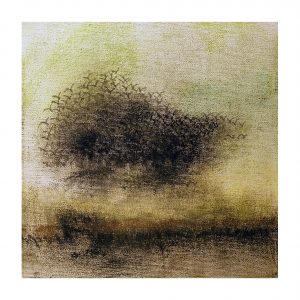
Bob Speers and the Quiet Magic of Ireland’s Bogs
In a room filled with timber, peat, and light, artworks hung on walls are more like fragments of the land itself – weathered, breathing, and alive with memory.
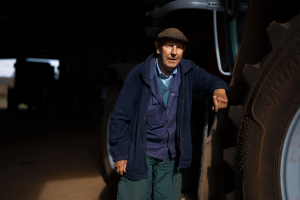
Hernan Farias on Light, Connection and Creative Growth
From the Classroom to the Camera – charting his shift from teaching English in Chile to full-time photography in Northern Ireland.
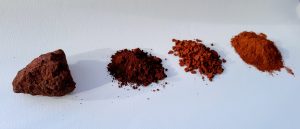
The Colour & Spirit of Time: Tricia Kelly’s Journey with Ócar
Exploring how sixty million years of volcanic fire, weather, and transformation created the red ochre that now colours Tricia’s life and work.
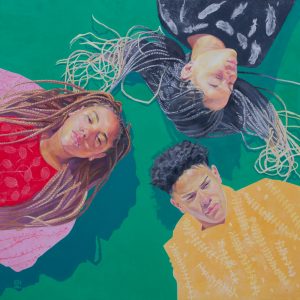
Faith and Colour: The Genuine Art of Beverley Healy
In her imaginative work, paint becomes prayer – a meditation on trust, surrender, and creation, where colour and stillness meet to form something transcendent.

Ruairi Mooney on Creativity, Practice & the Search for Authentic Art
From the North Coast to the Canvas: a journey of resilience, daily practice, and the slow discovery of an authentic artistic voice.

From Trauma Wards to Ceramics: Denise McAuley’s Authentic Creative Journey
From the trauma wards of the Royal to the shoreline of Cushendall, Denise creates small-batch ceramics that carry memory, resilience, & the rhythms of the sea.
